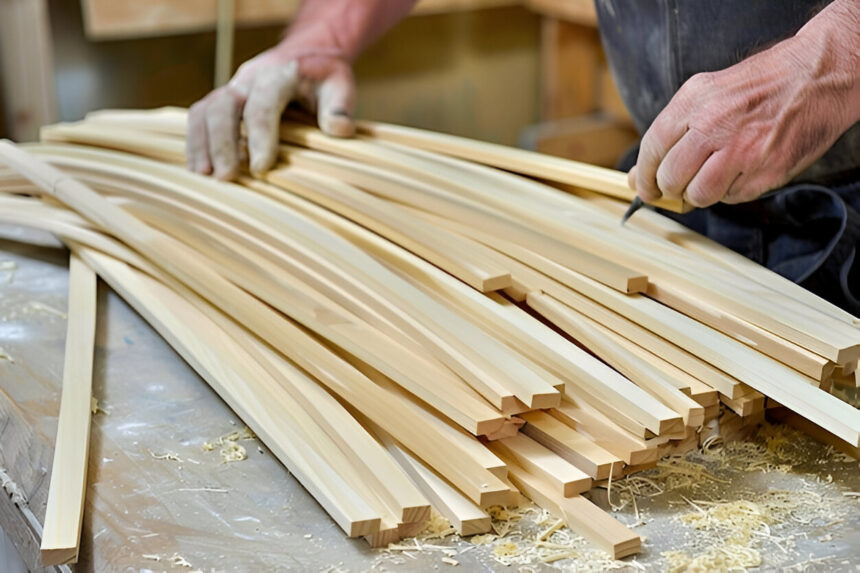Wood filler is a versatile material used in woodworking and carpentry to repair, patch, and fill gaps, holes, and cracks in wood surfaces. Whether you are a seasoned professional or a DIY enthusiast, having a good understanding of wood filler and its applications can help you achieve flawless results in your woodworking projects. In this comprehensive guide, we will delve into the world of wood filler, exploring its types, uses, application techniques, and tips for achieving seamless repairs.
What is Wood Filler?
Wood filler, also known as wood putty or wood patch, is a substance used to fill imperfections in wood surfaces. It is typically a blend of wood particles or fibers combined with a binding agent, such as epoxy, vinyl, or cellulose, to create a pliable paste that can be applied to damaged wood areas. Once dried and cured, wood filler can be sanded, stained, painted, or varnished to match the surrounding wood, making it virtually indistinguishable from the original surface.
Types of Wood Filler
- Oil-based Wood Filler: Oil-based wood fillers are durable and suitable for outdoor use. They are often made of linseed oil and wood fibers, providing excellent adhesion and flexibility.
- Water-based Wood Filler: Water-based wood fillers are environmentally friendly and easy to clean up with water. They dry quickly and are ideal for indoor projects.
- Epoxy Wood Filler: Epoxy wood fillers are known for their strength and durability. They consist of two parts that need to be mixed before application, offering a rock-hard finish once cured.
- Latex Wood Filler: Latex wood fillers are versatile and easy to apply. They are great for small repairs and are compatible with a wide range of finishes.
- Wood Grain Filler: Wood grain fillers are specifically designed to fill the pores and grain of open-pored woods, such as oak, walnut, and mahogany, before applying a finish.
Uses of Wood Filler
Wood filler serves various purposes in woodworking and carpentry, including:
- Repairing Cracks and Holes: Wood filler can be used to fill cracks, holes, dents, and gouges in wood surfaces, restoring them to their original condition.
- Smoothing Imperfections: Wood filler can help smooth out uneven surfaces, knots, and blemishes in wood, providing a flawless finish for staining or painting.
- Bonding Wood Joints: Wood filler can act as a bonding agent to strengthen wood joints and connections, enhancing the overall structural integrity of the project.
- Creating Decorative Details: Wood filler can be sculpted, carved, or molded to create decorative accents, rosettes, or intricate designs on wood surfaces.
Application Techniques
- Surface Preparation: Clean the wood surface and ensure it is dry and free of dust, debris, and grease before applying wood filler.
- Mixing: If using a two-part epoxy wood filler, follow the manufacturer’s instructions to mix the components thoroughly before application.
- Application: Use a putty knife or a flexible applicator to apply the wood filler evenly to the damaged area, slightly overfilling to account for shrinkage.
- Smoothing: Smooth out the excess filler using a putty knife or a damp cloth, ensuring a flush and level finish with the surrounding wood.
- Drying and Sanding: Allow the wood filler to dry and cure according to the manufacturer’s recommendations before sanding the surface smooth.
Tips for Achieving Seamless Repairs
- Color Matching: Choose a wood filler that closely matches the color and grain pattern of the wood for seamless blending.
- Layering: For deep holes or large gaps, apply wood filler in multiple layers, allowing each layer to dry before adding the next one.
- Sanding: Use fine-grit sandpaper to sand the repaired area gently, blending the wood filler with the surrounding wood for a seamless transition.
- Finishing: Apply a compatible finish, such as stain, paint, or varnish, to the repaired area to unify the appearance and texture of the wood surface.
Conclusion
Wood filler is an essential tool in the arsenal of any woodworker or DIY enthusiast, offering a quick and effective solution for repairing and enhancing wood surfaces. By understanding the types of wood filler, its uses, application techniques, and tips for achieving seamless repairs, you can confidently tackle any woodworking project with precision and finesse. Experiment with different wood fillers, techniques, and finishes to discover the endless possibilities of transforming and revitalizing wood surfaces with this versatile material. So, next time you encounter a crack, hole, or imperfection in your woodwork, reach for your trusty wood filler and let your creativity and craftsmanship shine.





